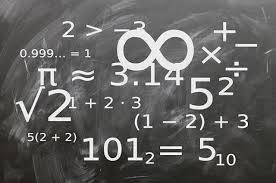A closer look into a well-known quotient ring

The ring $$Z[i]={a+ib: a,b in Z, i^{2}=-1}$$ is quite a well- known ring in Algebra. Further, being a principal ideal domain, every ideal of $$Z[i]$$ is generated by a single element say $$a+ib in Z[i]$$ and so can be taken in the form $$<a+ib>={(x+iy)(a+ib): x,y in Z}.$$
We now consider the quotient ring $$Z[i]/<a+ib>={(x+iy)+(a+ib): x,y in Z}$$ and try to look for a precise way of representing the elements in it. First we suppose that $$a$$ and $$b$$ are both non zero. The quantities $$d=gcd(a,b)$$ and $$N=(a^{2}+b^{2})/gcd(a,b)$$ deserve special attention in the discussion.
Result A: – An integer $$nin <a+ib>$$ if and only if $$nin <(a^{2}+b^{2}/gcd(a,b))>.$$
Proof: – Since $$d=gcd(a,b) $$, we can write $$a+ib=d(p+iq)$$, where $$gcd(p,q)=1.$$
Now let $$nin <a+ib>.$$ This implies that $$n=(a+ib)(x+iy)$$ for some $$x+iyin Z[i].$$
$$=> n=d(p+iq)(x+iy)$$ , which gives $$py=-qx$$ $$=> p|qx$$ and $$q|py.$$ (“|” means divides.)
And since $$gcd(p,q)=1$$ , so $$p|x$$ and $$q|y$$ which means that $$x/p$$ and $$y/q$$ are integers.
Also, $$py= -qx$$ $$=> x/p=-y/q=k$$ say, where $$kin Z.$$
Thus we get $$n=d(p+iq)(kp-ikq)$$
$$=>n=d(p^{2}+q^{2})(k+i0)$$ which shows that $$nin <d(p^{2}+q^{2})>.$$
But $$d(p^{2}+q^{2})={(dp)^{2}+(dq)^{2}}/d=( a^{2}+b^{2})/gcd(a,b)=N.$$
Hence, $$nin<N>.$$
Conversely if $$nin<N>$$ then by using the relation $$ a^{2}+b^{2}=(a+ib)(a-ib)$$ it can be easily shown that $$nin<a+ib>.$$
Therefore $$nin <a+ib>$$ if and only if $$nin <(a^{2}+b^{2}/gcd(a,b))>.$$
Result B: – For any $$nin Z$$ , $$niin <a+ib>$$ if and only if $$nin <N>.$$
Proof: – Similar to above.
Observation: –
1) Since $$1,2,dots ,N-1$$ do not belong to $$<a+ib>$$ so it is clear that the elements $$0+<a+ib>,1+<a+ib>, dots , (N-1)+<a+ib>$$ of $$Z[i]/<a+ib>$$ are distinct.
2) Since $$a^{2}+b^{2}=(a+ib)(a-ib)$$ so it is to be noted that $$<N> subseteq <a+ib>.$$
3) If $$nin Z$$ then by division algorithm, there exist unique $$q,rin Z$$ with $$0le r<N$$ such that $$=Nq+r.$$ Since $$n-r=Nqin <a+ib>$$ so $$+<a+ib>=r+<a+ib>.$$
Thus any element of the form $$n+<a+ib>$$ , where $$nin Z$$ , can be reduced to the form $$r+<a+ib>$$ for a unique integer $$r$$ satisfying $$0le r<N.$$
The following result is further more generalized:
Result C:- $$Z[i]/<a+ib>={r+is+<a+ib> : r,sin Z ~~and~~ 0le r<N ~~and~~ 0le s<d}.$$
Proof: – The proof is a just a simple application of a well- known property of GCD.
We take any element $$x+iy+<a+ib>$$ of $$Z[i]/<a+ib>.$$ By division algorithm, we can write $$y=qd+s$$ where $$q,sin Z, 0le s<d.$$ Again since $$d=gcd(a,b)$$ so there exist $$u,vin Z$$ such that $$d=au+bv.$$ And it is easy to see that $$d=(a+ib)(u-iv)-i(bu-av)$$ which gives
$$x+iy+<a+ib>=(x+qbu-qav)+is+iq(a+ib)(u-iv)+<a+ib>$$
$$=(Nw+r)+is+<a+ib>$$ , where $$0le r<N$$ , (division algorithm)
$$=r+is+<a+ib>$$ where $$0le r<N$$ , $$0le s<d$$ (since $$Nwin <a+ib>.$$)
Hence the result
Result D: – The elements in the set in RHS of D are distinct.
Proof: – Let $$A={r+is+<a+ib>:r,sin Z and 0le r<N and 0le s<d}$$
Let $$x_{1}+iy_{1}+<a+ib>$$ and $$x_{2}+iy_{2}+<a+ib>$$ be any two members of $$A$$.
Since $$0le y_{1}, y_{2} <d$$ and $$0le x_{1}, x_{2}<N$$ a simple observation reveals that
1) $$x_{1}-x_{2}$$ cannot be a non –zero multiple of $$N$$ and
2) $$y_{1}-y_{2}$$ cannot be a non-zero multiple of $$d.$$
The above members will be equal if $$( x_{1}+iy_{1})-( x_{2}+iy_{2})in <a+ib>$$
i.e. if $$( x_{1}-x_{2})+i(y_{1}-y_{2})in <a+ib>$$
$$=> (x_{1}-x_{2})+i(y_{1}-y_{2})=(a+ib)(m+in)$$ for some $$m,nin Z$$
$$=>( x_{1}-x_{2})=am-bn$$ and $$( y_{1}-y_{2})=bm+an$$
$$=>d|( x_{1}-x_{2})$$ and $$d|( y_{1}-y_{2})$$ since $$d=gcd(a,b)$$
i.e. $$y_{1}-y_{2}$$ is a multiple of d, but by (1) above $$ y_{1}-y_{2}=0$$ i.e. $$y_{1}=y_{2}$$
We thus have $$ x_{1}-x_{2}in<a+ib>$$ which in turn implies that $$ x_{1}-x_{2}$$ is a multiple of $$N$$ but by (2) above, the only possibility is $$ x_{1}-x_{2}=0$$ i.e. $$x_{1}=x_{2}.$$ Thus the elements of are distinct.
Conclusion:- From the above results it is clear that
1) $$Z[i]/<a+ib>={r+is+<a+ib> : r,s in Z and 0le r<N and 0le s<d}$$
2) $$ Z[i]/<a+ib>$$ contains exactly the above $$Ntimes d=a^{2}+b^{2}$$ elements.
3) If $$gcd(a,b)=1$$ , then $$Z[i]/<a+ib>={x+<a+ib>: 0le x<a^{2}+b^{2}}$$
which is isomorphic to the ring $$Z_{a^{2}+b^{2}}$$ of integers modulo $$a^{2}+b^{2}.$$
4) Further if $$a^{2}+b^{2}$$ is prime then $$Z[i]/<a+ib>$$ is a field and so $$<a+ib>$$ is maximal.
5) Another way of representing $$Z[i]/<a+ib>$$ is
$$Z[i]/<a+ib>={ r+is+<a+ib> : r,s in Z and 0le r<d and 0le s< N}$$
6) It can be proved that the same result holds for the case when one of $$a$$ or $$b$$ is zero. In this case we can take $$gcd(a,0)=mod(a)$$ and $$gcd(b,0)=mod(b).$$
There may be other better ways of representing the elements of $$ Z[i]/<a+ib>$$
We can try looking for other such smarter ways !!
- Debashish Sharma, Junior Research Fellow, Dept. of Mathematics,NIT Silchar.
